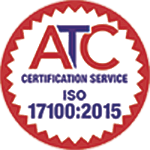Medical translations are some of the most difficult to complete by an ordinary translator and need the skills of a specialist. It’s preferable that anyone who attempts to take on a medical translation task should have some sort of medical qualification so that they have firsthand knowledge of the medical terminology which is most frequently used.
Altogether it has been estimated that the medical field is composed of no less than 20,000 medical terms and this doesn’t include the names of parts of the body, illness and names of medicines and drugs. The huge vocabulary is forever changing as new concepts are developed and new drugs and medicines are introduced.
What are the Medical Translations Problems and Solutions
One of the key problems in a medical translation is when there are two words that need to be translated but which could have different meanings. It would only be an experienced medical translator who would have the knowledge to know which translation is correct. One important example is the difference between dysphagia and dysphasia. The former word means having difficulties with swallowing, while the later word means loss of the ability to understand and use speech. These are very different meanings but the two words look and sound similar when spoken.
Medical abbreviations can easily be confused when translated, but they may have vastly different meanings. Possible examples are the abbreviations for the left and right ear. AD stands for the right ear while AS is used for the left ear and AU is the word for both ears. If the doctor sees a wrong translation it wouldn’t be noticeable and treatment could be administered incorrectly.
Using the Similarities between Languages is not Acceptable
Some English words are not that much different from some words in other languages. This is particularly the case between Medical Spanish and English. It is tempting to pick the literal translation, which isn’t always accurate. Cuantificación, which is a Spanish word, is usually translated into the English form which is quantification. This is quite correct but in the pharmaceutical context, it should be quantitation. Another example is reactivos, which aren’t actually reactives, but reagents.
New Medical Words
All new discoveries, findings, theories or drugs have to be given a name and as the medical field is considered to be universal, the International Anatomical Nomenclature Committee (IANC) endeavours to standardise and adapt scientific terminology through participating in international meetings. More than 80% of medical terminology has its roots in Latin. These words can be broken up into suffixes, prefixes and roots which help the translator to understand more easily the translation. Dermatitis is such an example as the root “derm” is referring to the dermis, i.e. the skin, while “-itis,” the suffix, refers to inflammation, so the word dermatitis comes out to mean skin inflammation.
It’s important that the medical translator knows what sort of text he or she is about to translate, whether it’s a prescription, a medical report for a patient or a medicine’s patent so that other similar examples can be referred to first.



